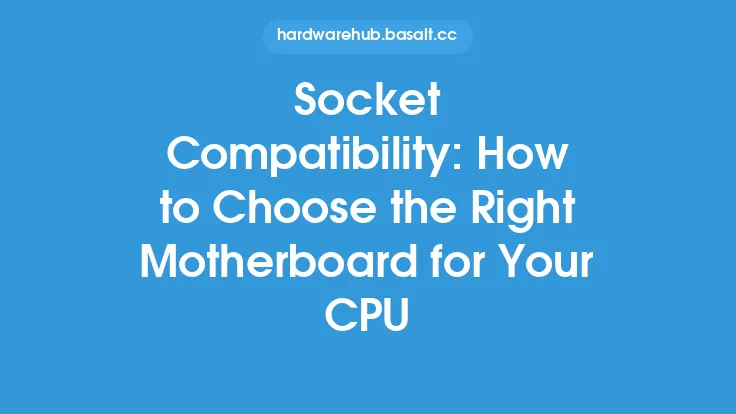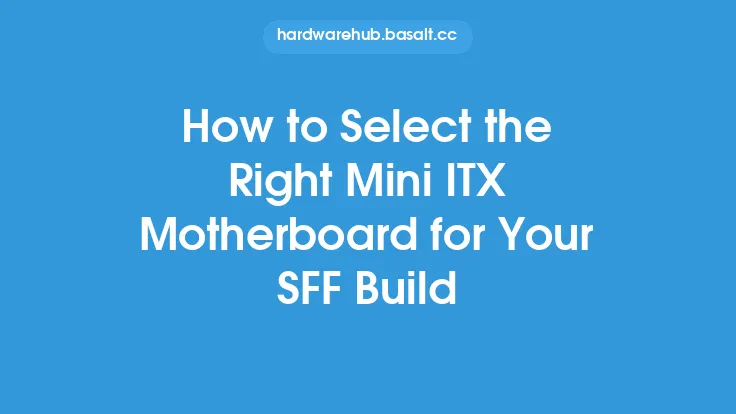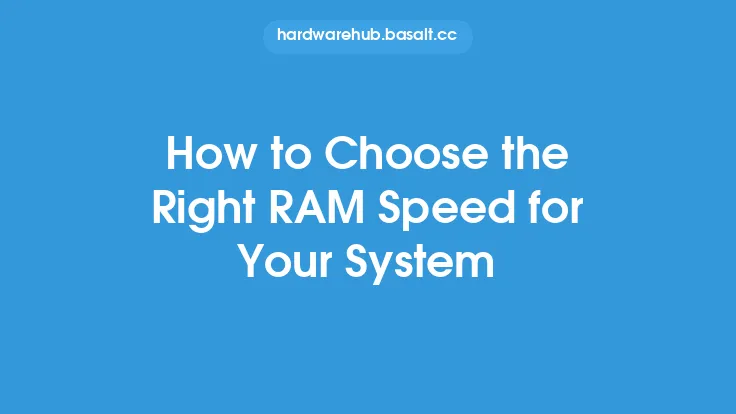When it comes to building a high-performance computer, the motherboard is one of the most critical components. It serves as the main circuit board that connects all the hardware components together, allowing them to communicate and function seamlessly. With so many high-end motherboards available in the market, choosing the right one can be a daunting task, especially for those who are new to PC building. In this article, we will guide you through the process of selecting the perfect high-end motherboard for your needs, taking into account various factors such as CPU compatibility, chipset, form factor, and features.
Understanding Your Needs
Before you start searching for a high-end motherboard, it's essential to understand your needs and requirements. What will you be using your computer for? Are you a gamer, content creator, or just a general user? Different use cases require different features and specifications. For example, gamers may prioritize motherboards with high-quality audio capacitors, excellent overclocking capabilities, and multiple PCIe slots for graphics cards. On the other hand, content creators may require motherboards with multiple USB ports, high-speed storage options, and reliable power delivery. Make a list of your requirements and prioritize them to help you narrow down your options.
CPU Compatibility
One of the most critical factors to consider when choosing a high-end motherboard is CPU compatibility. Ensure that the motherboard you choose supports your preferred CPU. For example, if you want to use an Intel Core i9 processor, you'll need a motherboard with an LGA 1200 socket. Similarly, if you prefer an AMD Ryzen 9 processor, you'll need a motherboard with an AM4 socket. Check the motherboard's specifications to confirm CPU compatibility, and also consider the chipset, as it may limit the CPU's features and overclocking capabilities.
Chipset
The chipset is another crucial factor to consider when selecting a high-end motherboard. The chipset determines the features and capabilities of the motherboard, such as the number of USB ports, SATA ports, and PCIe lanes. For example, the Intel Z590 chipset offers more features and overclocking capabilities than the H570 chipset. Similarly, the AMD X570 chipset offers more features and better power delivery than the B550 chipset. Choose a motherboard with a chipset that meets your needs and provides the features you require.
Form Factor
The form factor of the motherboard is also an essential consideration. The most common form factors are ATX, Micro-ATX, and Mini-ITX. ATX motherboards are the largest and offer the most features and expansion options. Micro-ATX motherboards are smaller and more compact, making them ideal for smaller cases. Mini-ITX motherboards are the smallest and most compact, making them perfect for tiny builds and compact cases. Choose a motherboard with a form factor that fits your case and meets your needs.
Features
High-end motherboards often come with a wide range of features, such as Wi-Fi, high-quality audio capacitors, and advanced power delivery. Consider the features that are essential to you and choose a motherboard that meets your requirements. For example, if you want to use multiple graphics cards, look for a motherboard with multiple PCIe x16 slots. If you want to use high-speed storage, look for a motherboard with M.2 slots and SATA 6Gb/s ports. Also, consider the quality of the features, such as the audio capacitors, voltage regulator modules (VRMs), and cooling solutions.
Power Delivery
Power delivery is a critical aspect of high-end motherboards, especially for overclocking and high-performance applications. Look for motherboards with high-quality VRMs, such as those with 12+2 phases or 16+2 phases. Also, consider the power delivery components, such as the chokes, capacitors, and MOSFETs. High-quality power delivery components can provide cleaner power, reduce noise, and improve overall system stability.
Overclocking Capabilities
If you're an overclocker, you'll want a motherboard that offers excellent overclocking capabilities. Look for motherboards with advanced overclocking features, such as multiplier adjustments, voltage control, and memory overclocking. Also, consider the quality of the overclocking tools, such as the BIOS and software utilities. A good overclocking motherboard should provide a user-friendly interface, precise control, and reliable performance.
Brand and Warranty
Finally, consider the brand and warranty of the motherboard. Reputable brands like ASUS, MSI, and Gigabyte offer high-quality motherboards with excellent warranties and support. Look for motherboards with a minimum of 3-year warranty and good customer support. Also, check the brand's reputation for producing high-quality motherboards and their commitment to innovation and customer satisfaction.
Conclusion
Choosing the right high-end motherboard can be a challenging task, but by considering your needs, CPU compatibility, chipset, form factor, features, power delivery, overclocking capabilities, and brand, you can find the perfect motherboard for your build. Remember to prioritize your requirements, research thoroughly, and read reviews from reputable sources. With the right motherboard, you can build a high-performance computer that meets your needs and provides excellent performance, stability, and reliability.





